WHERE ART MEETS ARCHAEOLOGY: FINDING ARTEFACTS FOR AN ART EXHIBITION OF EXCAVATIONS AT CALLEVA ATREBATUM
Today I’m working at Hampshire Cultural Trust with Dave Allen. I’m lucky because my visit times with the regular weekly volunteer day at the Archaeology Stores, managed by the Curator of Archaeology, David Allen.
To find out more about the work of David and the team, visit their excellent blog, which has a new post every Monday.
Hampshire Archaeology blog: https://hampshirearchaeology.wordpress.com/
—
Sarah is a volunteer at Hampshire Cultural Trust and has been working with Lesley (who is not in today so we couldn’t get a snap of her!) to prepare a display on some of the material from 1970s and 1980s excavations at Calleva Atrebatum (Silchester).
The pieces will be on display at the Willis Museum in Basingstoke, another Trust managed museum, from the 15th to the 29th August and will accompany a special exhibition ‘Silchester: Life on the Dig’ which is made up of works by Silchester’s Artist in Residence for 2014, Jenny Halstead.
The exhibition will be on display in numerous other locations in the south, but the Silchester objects that Sarah has been selecting will be exclusive to the Willis Museum.
Sarah and Lesley need to choose a representative sample of objects, but also to identify objects that are appropriate for display, because they have an interesting feature, are not too fragile, and in the case of some of the tiny coins, large enough to see!
They picked out a selection of coins, there is also a glass bead that will be included in the display.
Sarah is holding a whetstone that is a fragment of sandstone, originally used as a roof tile, and then reused as a whetstone to sharpen chisels.
The Samian bowl is very attractive and caught the eye of both of them when they were selecting items. It has all sorts of animals, including a deer, a goat, a hare, a boar, a bird, a dolphin, around the outside of it, and Sarah and Lesley thought that it would be fun to find out a bit more about the decoration. The bowl was made in Lezoux in the 2nd century AD.
The pair also found some nice details on some of the tiles in the stores, including one that has a clear dog print on it.
Finally, just before re-packaging the items to be sent over to the Willis Museum, Sarah needs to type and print labels that will go on display alongside the objects. This task can be quite time consuming as it is nice to be able to provide a little contextual information for each object, and so some research must be done for some of the less common artefacts.
The objects will be on display at the Willis Museum in Basingstoke: http://hampshireculturaltrust.org.uk/willis-museum
—
Nicole Beale

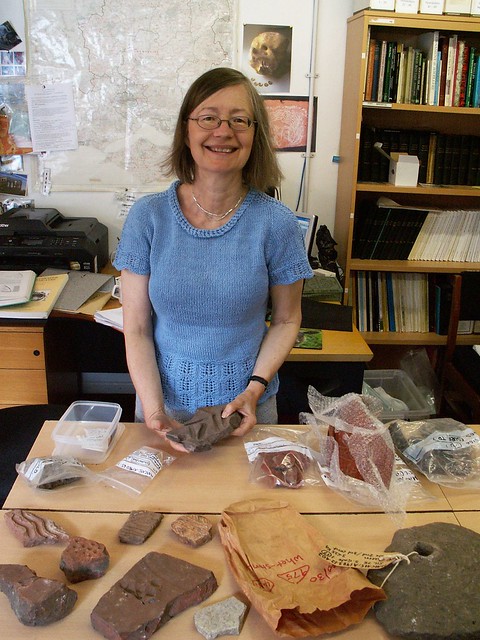
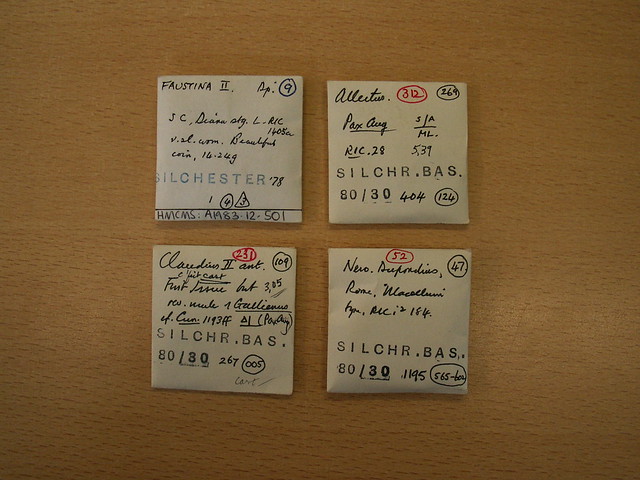
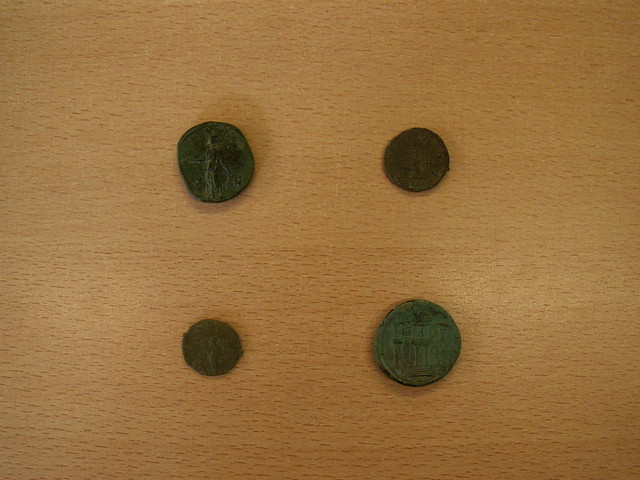

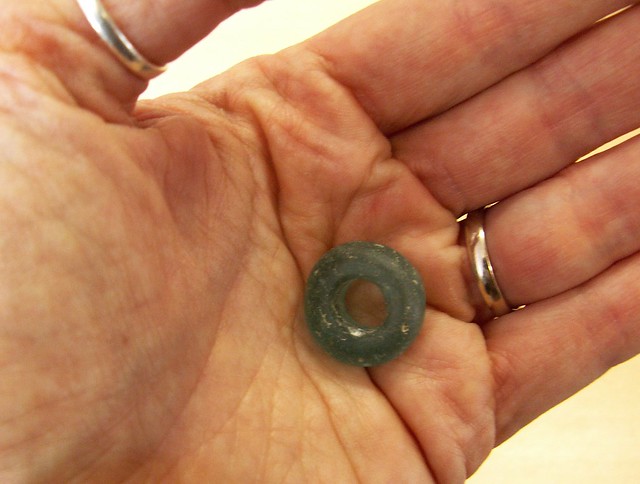
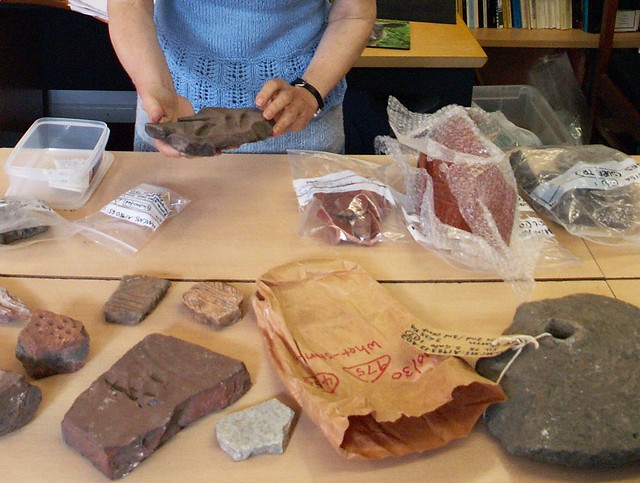
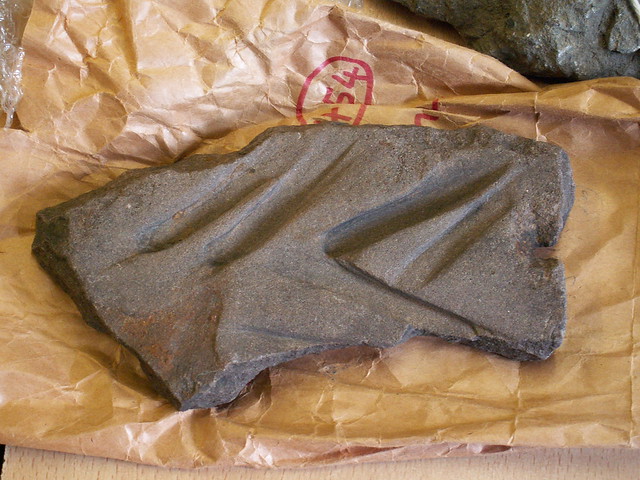
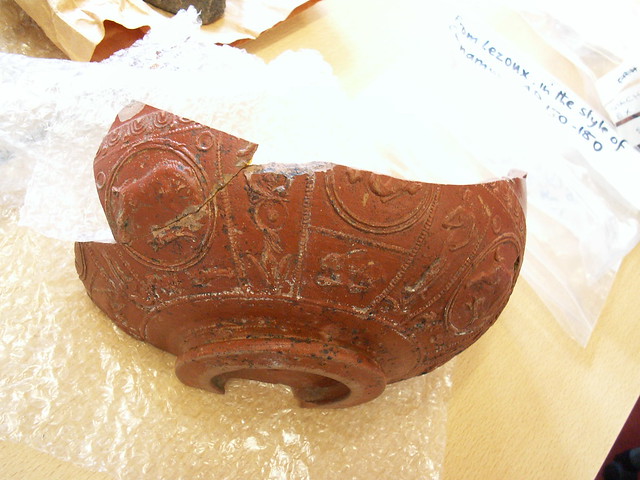
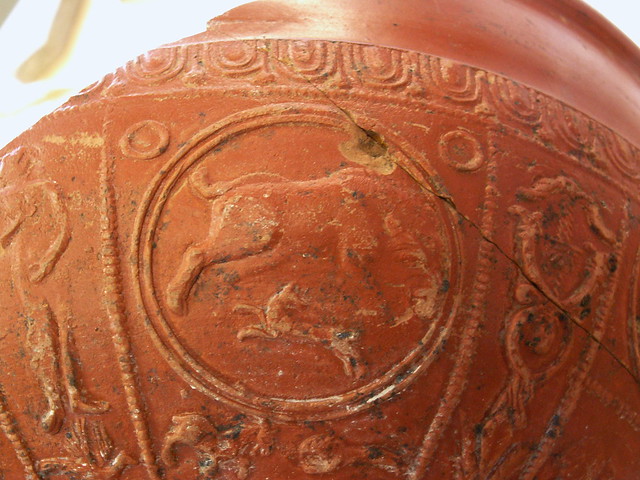
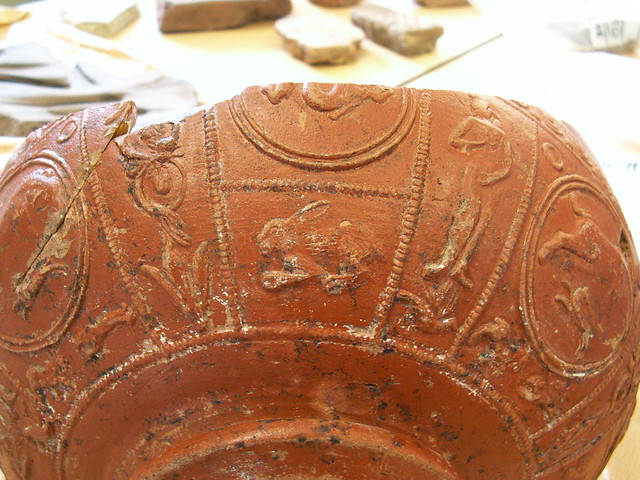
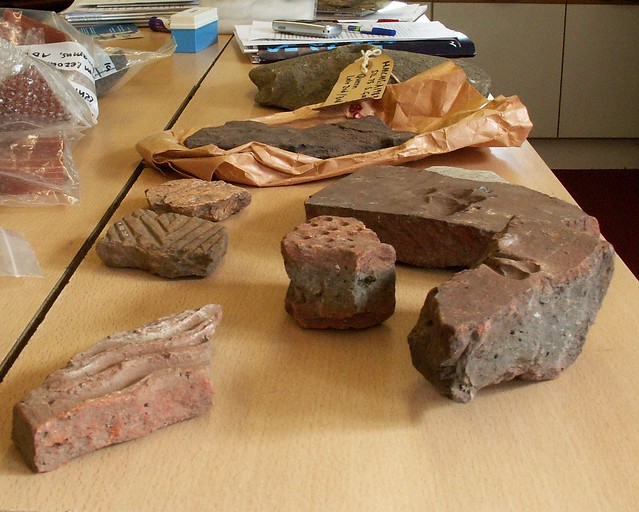
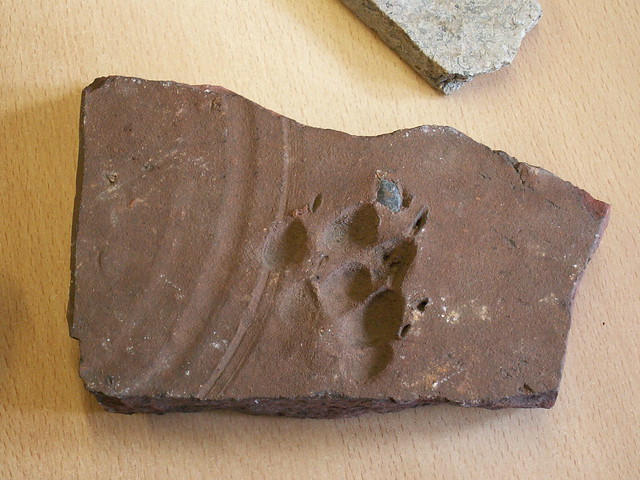
Leave a Reply